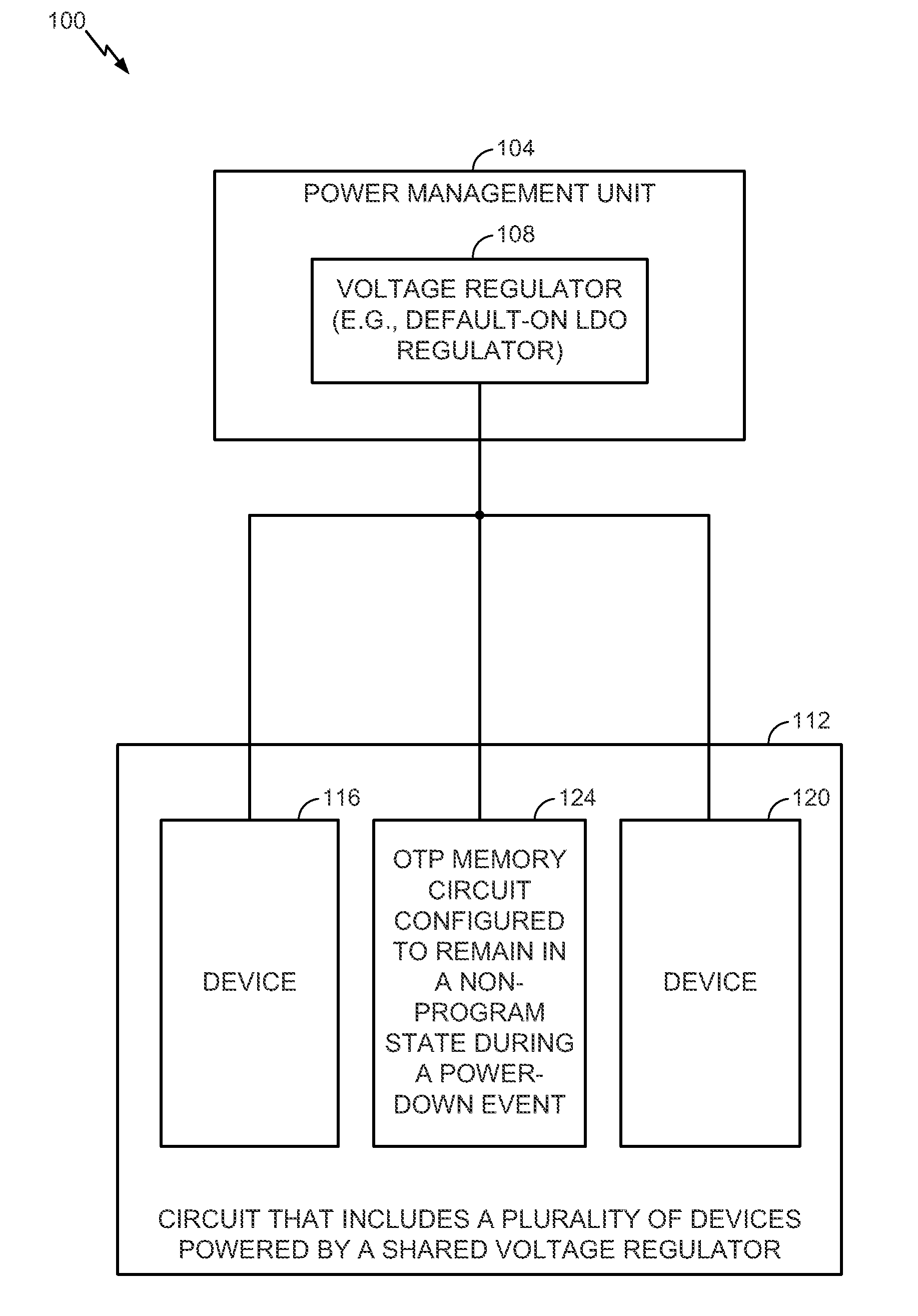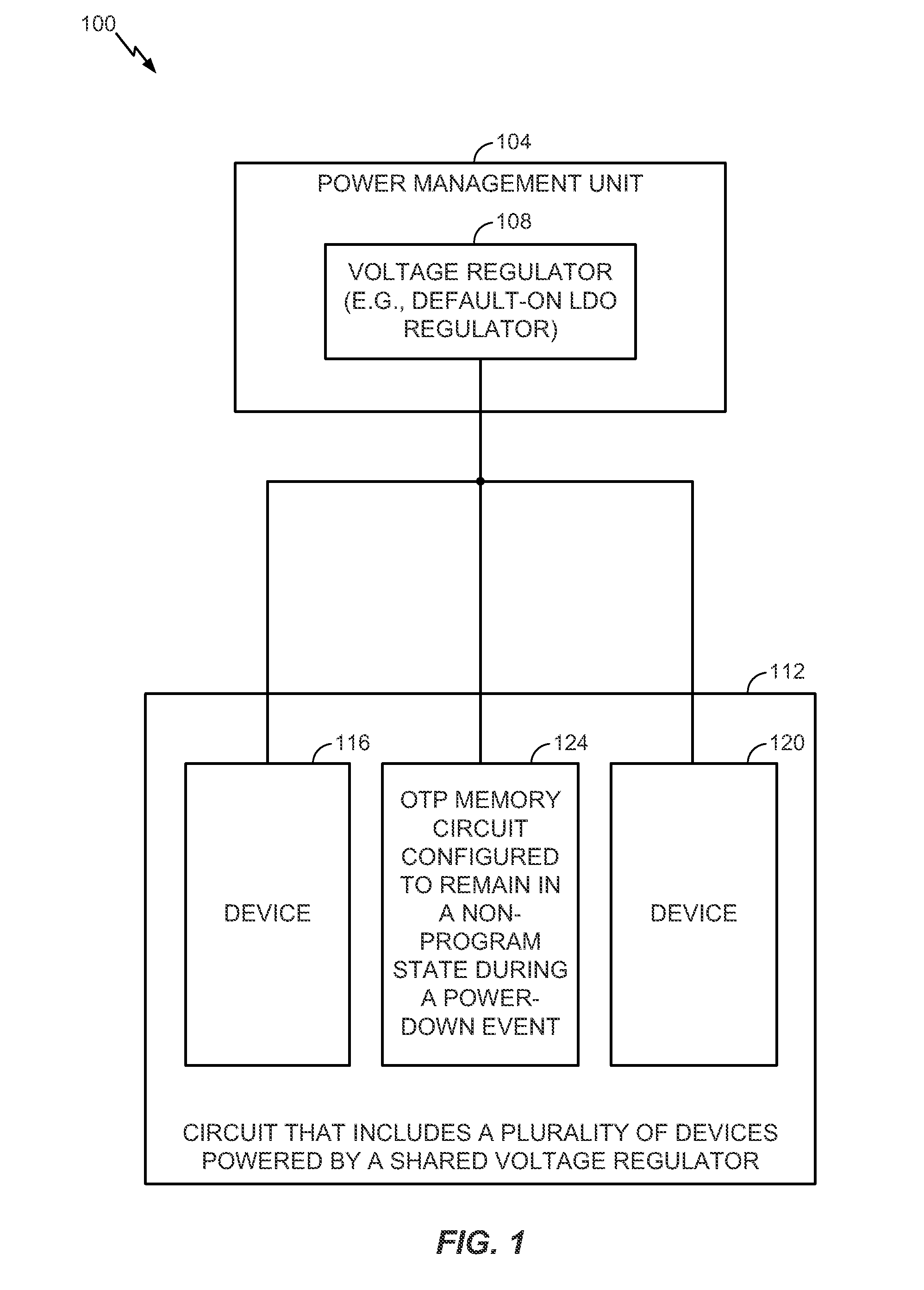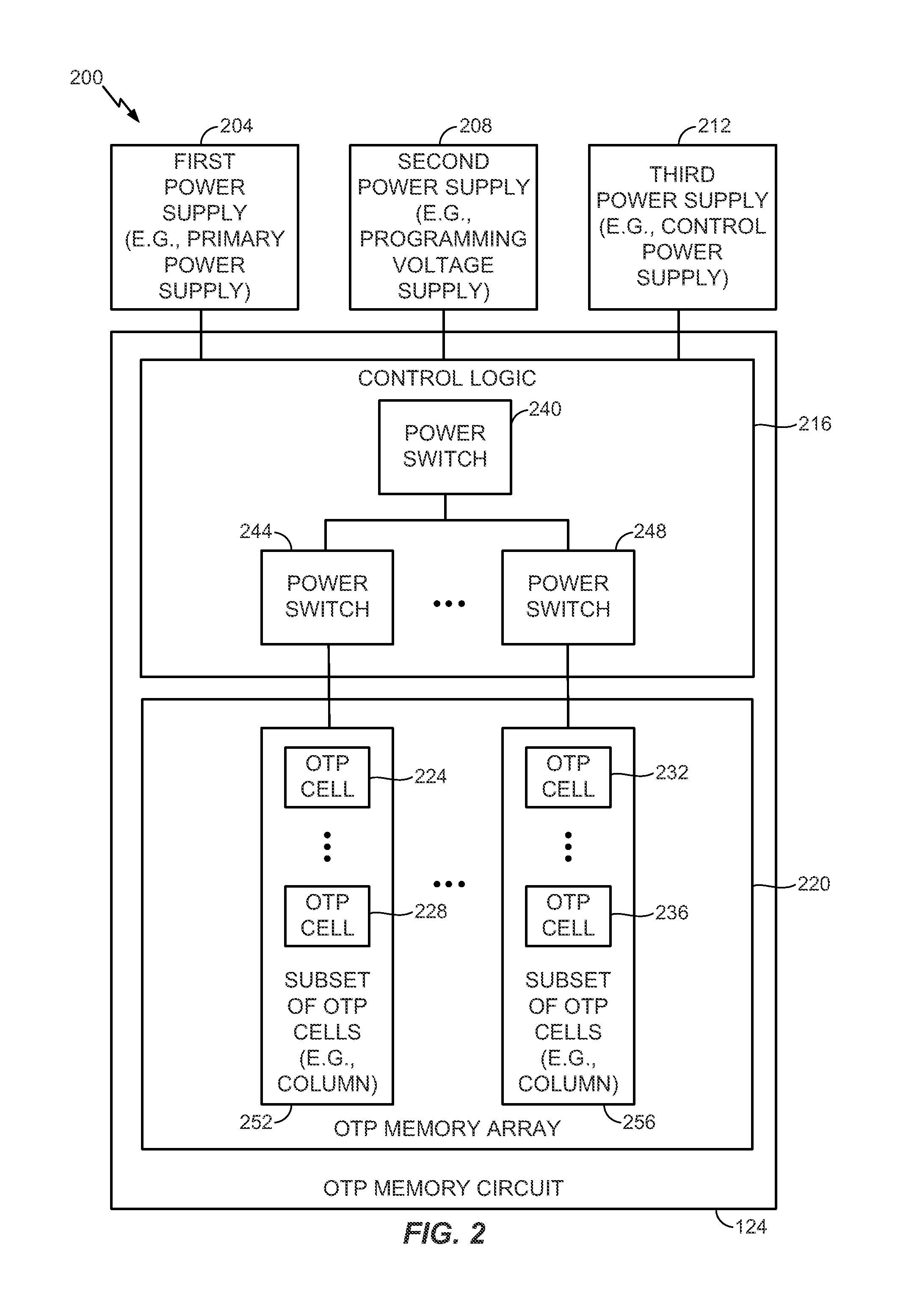Circuits configured to remain in a non-program state during a power-down event
a technology of non-program state and power-down event, which is applied in the field of circuits configured to remain in a non-program state during a power-down event, can solve the problems of accidental programming that may be irreversible, corrupt data stored in and unintentionally program the otp memory cell that has not yet been programmed, so as to reduce system cost and complexity
- Summary
- Abstract
- Description
- Claims
- Application Information
AI Technical Summary
Benefits of technology
Problems solved by technology
Method used
Image
Examples
Embodiment Construction
[0018]Referring to FIG. 1, a particular illustrative embodiment of an apparatus is disclosed and generally designated 100. The apparatus 100 may include a power management unit 104 that includes a voltage regulator 108 (e.g., a default-on, low-dropout (LDO) regulator). The apparatus 100 may include a circuit 112 that includes a one-time programmable (OTP) memory circuit 124 and at least one other device. For example, in the embodiment of FIG. 1, the circuit 112 includes a device 116, a device 120, and the OTP memory circuit 112. The OTP memory circuit 112 is configured to remain in a non-program state during a power-down event (e.g., during a power-down event of the circuit 112). The power-down event may be an ungraceful power-down event, such as an accidental or unexpected power-down event.
[0019]As shown in FIG. 1, a plurality of devices (e.g., the device 116, the device 120, and the OTP memory circuit 124) may be configured to share the voltage regulator 108. Utilizing a single vo...
PUM
 Login to view more
Login to view more Abstract
Description
Claims
Application Information
 Login to view more
Login to view more - R&D Engineer
- R&D Manager
- IP Professional
- Industry Leading Data Capabilities
- Powerful AI technology
- Patent DNA Extraction
Browse by: Latest US Patents, China's latest patents, Technical Efficacy Thesaurus, Application Domain, Technology Topic.
© 2024 PatSnap. All rights reserved.Legal|Privacy policy|Modern Slavery Act Transparency Statement|Sitemap



